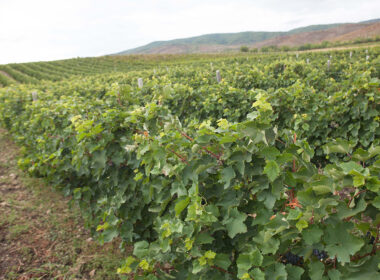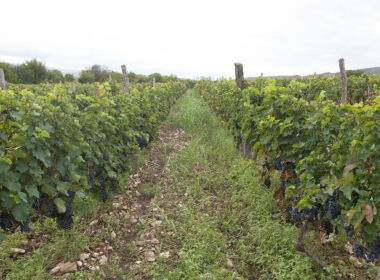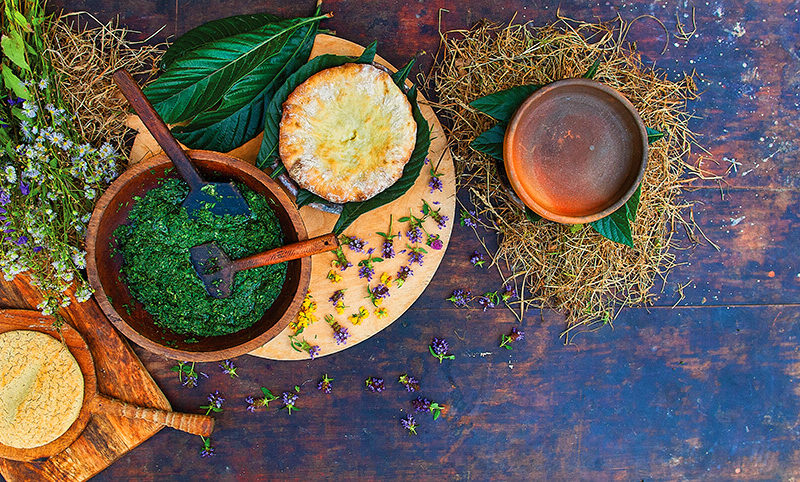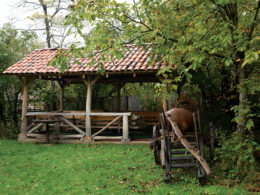Keti Kvichidze
The diversity of sauces and spices is directly related to the development of the cuisine of a particular country. If history has taught us anything, it is that demand for varying tastes comes with culinary progress. Sauces and spices that enrich the dish with colorful flavors have always been a source of pride for Georgia. Sauces have always served as a way to add unique flavors to different dishes (especially meat). Imereti, Guria, and Samgrelo, or Western regions of Georgia, are especially known for their sauces and dressings.
Years ago, when I started a culinary expedition, I came across many interesting but forgotten recipes for sauces in different parts of our country. That is why it became necessary to plan an ethnographic study of sauces and for the first time in Georgia, we conducted it together with ethnographer Nodar Shoshitashvili. You will learn more about this expedition later. But before, I will tell you more about some of the Georgian sauces.
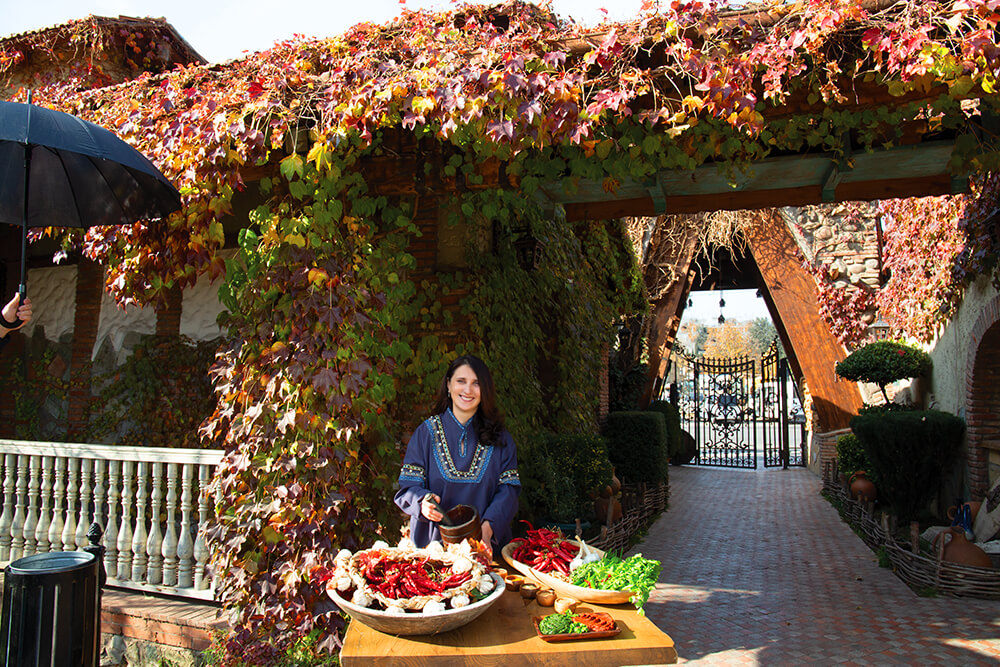
The first sauce is tkemali. Tkemali (Plumus cerasifera) grows in almost every region of Georgia and occupies an important place in Georgian cuisine. It is used for making juices, compotes, jams, spices, sauces, sweets, and a famous sauce that is an integral part of Georgian supra.
Tkemali is one of the varieties of wild plum. It grows in many countries of the world but is rarely consumed. Persians call it “alu”, which “alucha” derives from. As the historical scriptures say: “Local fields are filled with tkemali”. Indeed, it grows in every region of Georgia, and each region makes a sauce out of it. Tkemali is sweet and sour, although the varieties differ depending on the region. For instance, tkemali variety found in Imereti and Samegrelo is called Ghoghnosho (damson). Its fruits are meatier and tastier, and their sauce – more expensive.
Making tkemali sauce is sort of a ritual in every family. In summer, when the fruit is fully ripe, each household begins its preparations. My great grandmother had two huge pots in Guria she called “chakhana”, especially for making tkemali. She first picked the ripest fruits (red, yellow, and pink) and put them into the pot with red pepper, dried dill, and coriander, and boiled it until the fruit separated from the pits. She then strained it well and crushed the fruit further, all the while keeping the juice. The final touches were adding garlic, salt, pepper, coriander, and dill, but the ritual I remember the most is tasting. She would pour a little bit onto her palm and try it to make sure it was well-seasoned and balanced. She would then pour the mass into glass bottles or jars and keep them stored for later.
Tkemali goes very well with fried chicken, beef, fish, millet, and even phkhali. It is also very good with cold mchadi (cornbread) or bread, as a starter. In Spring, Georgians make tkemali from unripe tkemali or alucha. The one made from tkemali is called “new tkemali”, and the one made from alucha is called “tsotsoka”. The method of making is mostly the same, with a slight difference: spring sauce is seasoned with fresh coriander plant and wild mint (pennyroyal), which give it extra flavor.
Walnut sauces
Walnut is used in many Georgian dishes and desserts. It is an essential part of Georgian cuisine. In Kakheti, it is mostly used to make churchkhela (type of Georgian dessert) or consumed with bread, while the Western part heavily uses it to make sauces and dressings. One of the most popular sauces is Bazha. Bzha means the Sun and milk in Megrelian dialect, or yellow and bright. It is made by diluting ground walnut, garlic, and fresh or dry coriander paste in water. The final result is a wonderful sauce that beautifully complements fried chicken and fish.
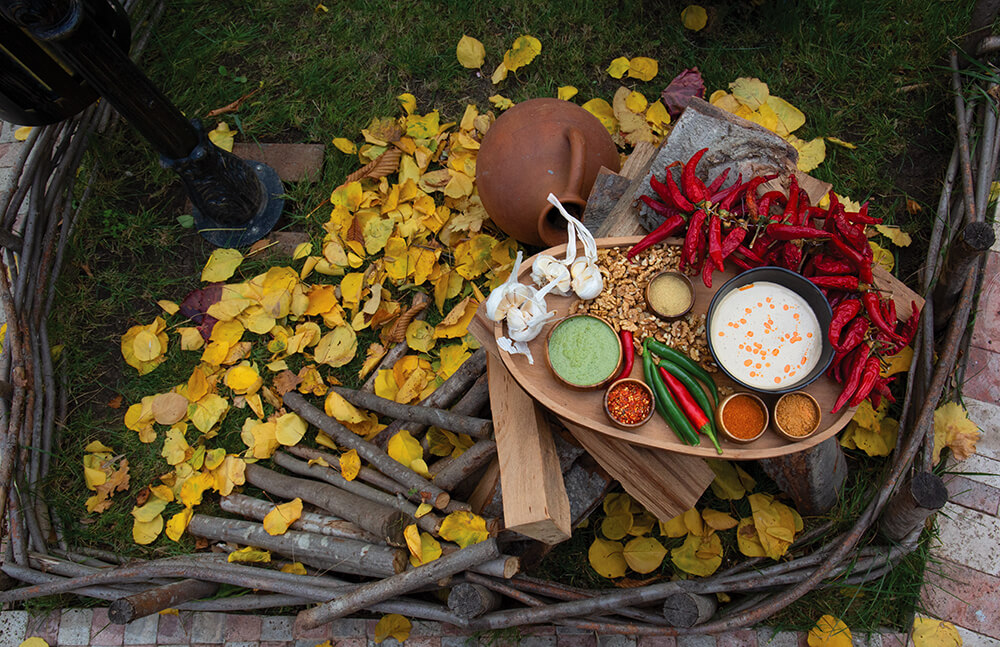
Another great sauce we found in Saingilo is called “nigozi”. Each household owns a nut-cracker and a wooden tool used to make this sauce. “Nigozi” is a paste that only has salt and no other spices. I was astonished upon trying it because I did not expect it would be so tasty. I will always remember its flavor, as well as my visit to Saingilo.
Finally, there is a sauce that I would call “Georgian umami”. It is made using aged vinegar and moldy walnuts. We encountered it in Guria. It is astonishing how Gurians transform black, moldy walnuts into food: they soak it and store it in a clay pot; then, during the winter, they add salt and coriander. It is especially great with boiled chuck and phkali, paired with high-acidity Gurian wine.
Spicy sauces
Samegrelo is especially interesting in terms of sauces; they add hot spices to most dishes. In Samegrelo, dried or smoked pepper turns into Ajika, with garlic and dry spices. “Achei jika” means bread and salt in Abkhazian and no dinner takes place without Ajika in Abkhazia or Samegrelo. Ajika spiced chicken or pork is placed on a skewer and fried on an open fire, giving it unforgettable charred aromas. Spices spread through this region as a medicinal antidote to malaria.
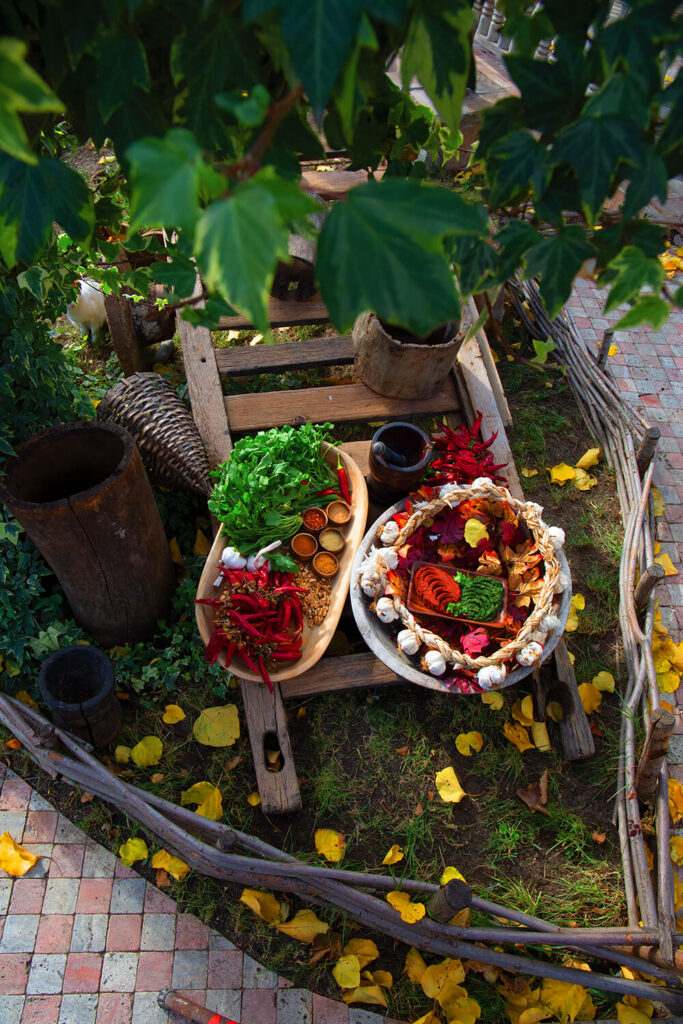
Sweet sauces
We conclude our rubric with a sweet – mulberry must – sauce from the Samtskhe-Javakheti region. They especially admire mulberry here. “Bakmazi” or mulberry must sauce is an exceptional product that is filling, healthy, and stores well.
Ripe mulberry is boiled in a large copper pot. After an hour, mulberry juice is filtered through a special stone filter, which is put to boil once again in a low, wide copper pot called “teshti”. After two hours of boiling the liquid reduces and changes in color. Color and viscosity determine the readiness of “Bakmazi”: it should be black and honey-like.

In the old days, they stored Bakmazi in clay pots, but now they use glass jars, which is best for Bakmazi storage. If cooked correctly, it can store up to 2 years, without losing its flavors. It takes quite a bit of knowledge and experience to make Bakmazi.

